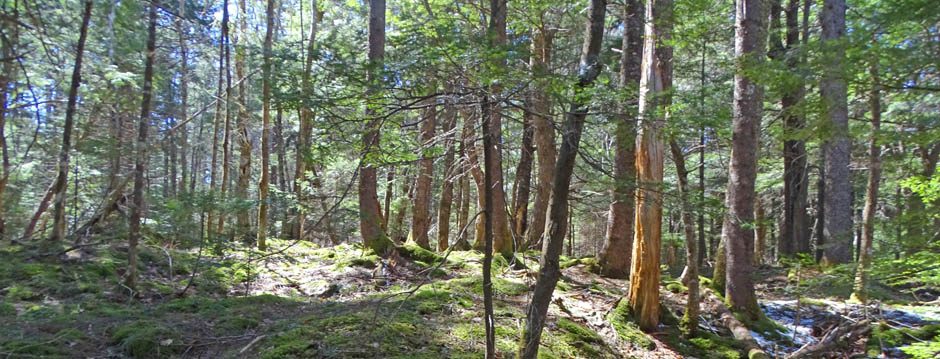The hidden carbon impacts of getting mass timber wrong
Jennifer Hahn, Mar 31, 2023. Interview and article on www.dezeen.com/ (online architecture magazine) “Architects are increasingly using mass timber in the hopes of creating net-zero buildings but carbon assessments are missing key sources of potential emissions, researchers tell Dezeen in this Timber Revolution feature. The standard method for determining a building’s overall carbon footprint is a whole-building life-cycle assessment (LCA) that breaks down emissions at every stage – from the sourcing of raw materials to their ultimate disposal. These calculations tend to indicate significantly lower emissions for timber structures compared to those made entirely out of concrete and steel. But experts warned that LCAs only tell part of the story. “LCAs do not typically consider anything that happens in the forest,” said forester and timberland manager Mark Wishnie.”And the land management side is, from a climate perspective and a biodiversity perspective, enormously important,” added Steph Carlisle of the Carbon Leadership Forum research group. “That’s really where all the action is.”
What Is the Impact of Mass Timber Utilization on Climate and Forests?
Rachel Pasternack et al, 2022. in Sustainability 214(2), 758
“…Several recent studies have shown that substituting mass timber for steel and concrete in mid-rise buildings can reduce the emissions associated with manufacturing, transporting, and installing building materials by 13%-26.5%. However, the prospect of increased utilization of wood products as a climate solution also raises questions about the impact of increased demand for wood on forest carbon stocks, on forest condition, and on the provision of the many other critical social and environmental benefits that healthy forests can provide. A holistic assessment of the total climate impact of forest product demand across product substitution, carbon storage in materials, current and future forest carbon stock, and forest area and condition is challenging, but it is important to understand the impact of increased mass timber utilization on forests and climate, and therefore also on which safeguards might be necessary to ensure positive outcomes. To thus assess the potential impacts, both positive and negative, of greater mass timber utilization on forests ecosystems and emissions associated with the built environment, The Nature Conservancy (TNC) initiated a global mass timber impact assessment (GMTIA), a five-part, highly collaborative research program…”
The carbon costs of global wood harvests
Liqing Peng et al., 2023 in Nature/ “..we present results of a new model that uses time discounting to estimate the present and future carbon costs of global wood harvests under different scenarios. We find that forest harvests between 2010 and 2050 will probably have annualized carbon costs of 3.5–4.2 Gt CO2e yr−1, which approach common estimates of annual emissions from land-use change due to agricultural expansion. Our study suggests an underappreciated option to address climate change by reducing these costs.”
Can rising remand for timber in construction accelerate deforestation?
Briales & Flinn at World Conference on Timber Enginerring Oslo 2023 “Finding the balance between demand for forest products and preserving forests through FM will ultimately rely on robust Chain of Custody (CoC) data – informing policy; purchasing strategy; and due diligence, especially if aligned with consistent domestic policies in the areas of tenure, land use and forestry.”
As Mass Timber Takes Off, How Green Is This New Building Material?
BY JIM ROBBINS • APRIL 9, 2019 for Yale Environment 360. “Mass timber construction is on the rise, with advocates saying it could revolutionize the building industry and be part of a climate change solution. But some are questioning whether the logging and manufacturing required to produce the new material outweigh any benefits…The forestry part is what has some skeptical of how ecologically sound mass timber is and, if and when it’s scaled up, whether it will truly provide a planetary climate solution. In a letter to the city of Portland last year, representatives of Oregon environmental groups — including the Audubon Society, the Sierra Club, and Oregon Physicians for Social Responsibility — raised serious doubts about mass timber as a green climate solution and questioned the city’s plan to use it. First and foremost, they said, is the need to certify that wood is logged sustainably and certified as such. “Without such a requirement,” the letter stated, the city “may be encouraging the already rampant clear-cutting of Oregon’s forests… In fact, because it can utilize smaller material than traditional timber construction, it may provide a perverse incentive to shorten logging rotations and more aggressively clear-cut.” Such industrial-type forestry — large-scale plantings of trees selected to grow fast — creates a “biological desert,” said Talberth, of the Center for Sustainable Economy. “And it’s driving the extinction of thousands of species. Mass timber is mass extinction.” “We must ensure that mass timber drives sustainable forestry management, otherwise all of these benefits are lost,” agreed Mark Wishnie, director of forestry and wood products at The Nature Conservancy. “To really understand the potential impact of the increased use of mass timber on climate we need to conduct a much more detailed set of analyses.”
A Life Cycle Assessment of the Environmental Impacts of Cross-Laminated Timber
E. Svensson, David Panojevic 2019, Lund University “…Cross-laminated timber is considered a versatile, renewable and sustainable structural construction material. The global warming potential is significantly reduced for cross-laminated timber if carbon sequestration, atmospheric carbon being stored in bio-mass, is accounted for. To minimize resource consumption, a circular approach regarding construction material and construction waste is necessary. Waste management is important for the overall environmental sustainability performance of buildings.”
Cross-laminated timber for building construction: A life-cycle-assessment overview
Adel Younis & Adel Younis, Ambrose Dodoo. 2022 Journal of Building Engineering Volume 52, 15 July 2022, 104482
